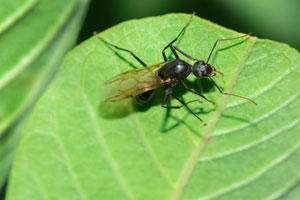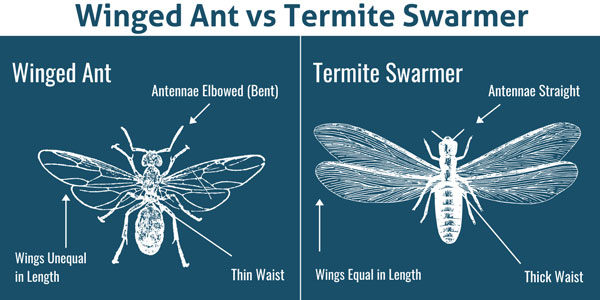 If you think you’ve spotted a termite in or near your home, how can you be so sure it’s not a carpenter ant? These two wood-destroying insects are commonly mistaken for one another. Together, they are responsible for some of the worst residential pest infestations each year for homeowners. Swarmers (termites or carpenter ants with wings) are both active around the same time of year, but their similarities end there.
If you think you’ve spotted a termite in or near your home, how can you be so sure it’s not a carpenter ant? These two wood-destroying insects are commonly mistaken for one another. Together, they are responsible for some of the worst residential pest infestations each year for homeowners. Swarmers (termites or carpenter ants with wings) are both active around the same time of year, but their similarities end there.
Keep reading for expert info from Active Pest Control on how to tell the difference between termites and carpenter ants.
What do Carpenter Ants and Termites Look Like?
To the untrained eye, it’s very easy to confuse carpenter ants for termites in the swarmer stage. Although they look very similar, the size of the swarmer differentiates the two. The main differences between how carpenter ants and termites look are:
- Carpenter ant swarmers: These are black in color, with some species having slightly red coloring. Carpenter ants measure 1/2″–5/8″ with antenna bent at a 45-degree angle. Their wings are translucent with a reddish brown hue, laying over the posterior of the ant. Carpenter ants are by far the biggest ant species in the nation.
- Termite swarmers: These termites are dark brown to black, and measure 3/8″ long including the wings. Their wings are a translucent to slightly milky or smoky color. Their wings may overlap, and are typically as long as or slightly longer than the body. This is an easy visual clue to differentiate them from carpenter ants.

What’s Worse: Termite Damage or Carpenter Ant Damage?
Both the termite and the carpenter ant attack wood, but in very different ways. For the most part, carpenter ants establish their nests in decayed wood and then later expand into undamaged wood, insulation, or wall voids. Their damage is not always visible, but the galleries they excavate appear to have been sanded.
Termites, on the other hand, eat through wood. These wood-destroying insects find their way into a structure around basement windows, doorways, under siding, porches, or any structure in contact with the soil. Established colonies can range from 60,000 to over a million workers and can consume nearly 5 grams of wood per day. For this reason, termites are significantly more dangerous than the carpenter ant, as they can cause much more damage in a short period of time.
When to Call a Termites or Carpenter Ants Exterminator
If you’ve seen the signs of either of these insects or have noticed damage, it’s crucial to call the exterminators at Active Pest Control as soon as possible. Everyone knows termites are infamously difficult to control, but carpenter ant colonies are hard to exterminate as well! With our licensed and tenured termite control specialists, we can inspect your Atlanta GA property and protect your structure from wood-destroying insects like termites and carpenter ants.
